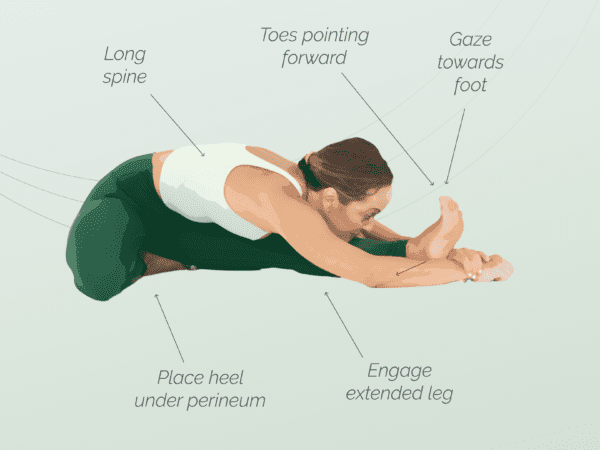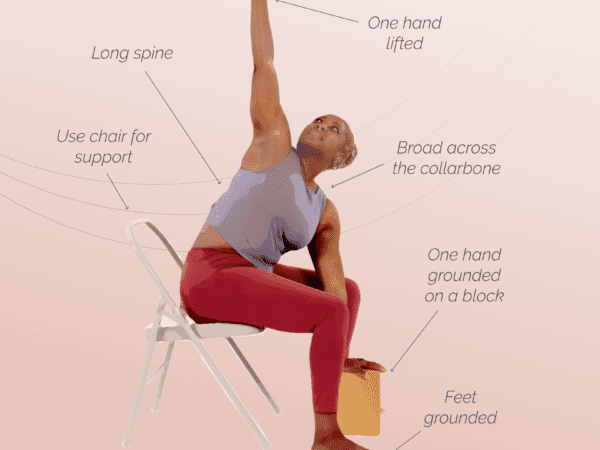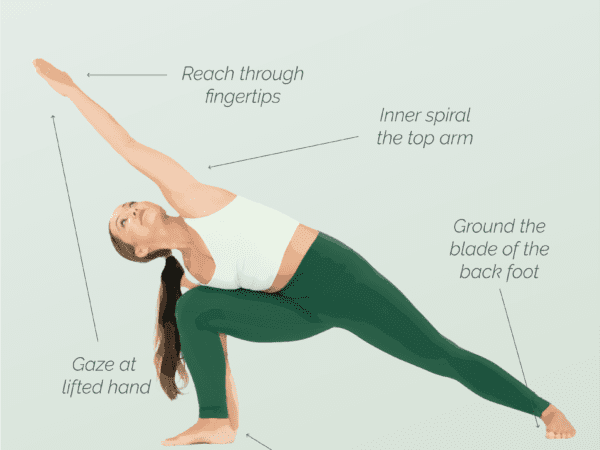Parsva bakasana is the Sanskrit name for side crow pose. It is an arm-balancing yoga posture that requires strength, balance, and focus. This challenging pose is an excellent way to tone your arms, strengthen your core, and improve your overall stability. However, mastering parsva bakasana takes time, patience, and dedication. Let’s explore the steps and techniques necessary to perform this asana with proper alignment and form. Whether you are a seasoned yogi or just starting your yoga journey, this guide will help deepen your practice and build confidence in performing parsva bakasana.
What are the benefits of parsva bakasana?
Parsva bakasana offers numerous benefits to your physical and mental health. Here are some of the benefits:
1. Strengthens the arms and wrists: Parsva bakasana requires a lot of arm and wrist strength to hold the pose. Regular practice of this pose can help you build stronger and more toned arms and wrists.
2. Tones the core: This pose requires a strong and engaged core to maintain balance. Practicing parsva bakasana regularly can help you develop toned and strong abdominal muscles.
3. Improves balance and coordination: Parsva bakasana requires a great deal of balance and coordination, which can improve with regular practice. This can help you in other areas of your life that require balance and coordination.
4. Boosts confidence and courage: Practicing parsva bakasana requires courage and confidence. When you are able to hold the pose, it can give you a sense of accomplishment and boost your self-confidence.
5. Calms the mind: Parsva bakasana is a challenging pose that requires focus and concentration. This can help you calm your mind and reduce stress and anxiety.
Side crow is a good pose to add to your favorite yoga sequences when you’re looking for a bit of a challenge.
What are the contraindications for parsva bakasana?
Parsva bakasana, also known as side crow pose, is a challenging arm balance that requires strength and flexibility in the arms, core, and legs. It is important to practice this pose with caution and awareness, especially if you have any pre-existing injuries or medical conditions.
1. Wrist and Elbow Injuries:
If you have any wrist or elbow injuries, it is best to avoid parsva bakasana. This pose requires a lot of weight-bearing through the hands, wrists, and forearms. Putting too much pressure on these areas can aggravate existing injuries and lead to further pain and discomfort.
2. Shoulder Injuries:
Parsva bakasana also requires a lot of strength and stability in the shoulders. If you have any shoulder injuries or pain, it is best to avoid this pose. Attempting this pose with a shoulder injury can cause further damage and impede the healing process.
3. Pregnancy:
It is not recommended to practice parsva bakasana during pregnancy. This pose requires a lot of core and abdominal strength, which can be challenging during pregnancy. Additionally, the pressure on the abdomen and internal organs can be uncomfortable and potentially harmful for the developing fetus.
4. High Blood Pressure:
If you have high blood pressure, it is not recommended to practice parsva bakasana. This pose requires a lot of effort and can cause a sudden increase in blood pressure. It is important to prioritize your safety and listen to your body when practicing yoga.
It is essential to practice yoga with awareness and caution, especially if you have any pre-existing injuries or medical conditions.
How do you perform parsva bakasana?
You need to be able to do a deep squat to do this pose.
Get into a deep squat with your feet together.
Twisting from the navel or midsection place both hands on the floor on the left side of your body. Put your palms flat on the floor shoulder-width apart.
Engage your shoulder girdle and lean into your hands. Stack your knees on the shelf up your right upper arm.
Lean forward, bending your elbows and lifting your feet off of the ground.
Try to keep your elbows free and away from your body.
Stay here for five breaths before coming out of the pose slowly and repeating it on the other side.
Tips:
– Parsva Bakasana requires both arm and core strength, so practice other arm balances and core exercises to build up your strength.
– Keep your gaze forward and your core engaged to maintain your balance.
– Always warm up your wrists, arms, and shoulders before attempting this or any arm balances.
How can I safely exit parsva bakasana?
Parsva bakasana, or side crow pose, is an advanced arm balance posture that requires balance, strength, and focus. Exiting the pose safely is just as important as entering it, as it can help prevent injury and maintain the flow of your practice. Here are some steps to safely exit parsva bakasana:
Plant your hands firmly on the ground. As you prepare to exit the pose, ensure that your hands are securely planted on the ground with your fingers spread wide. This will provide a stable base for your body.
Slowly lower your feet to the ground. Be mindful not to drop your feet suddenly, as this could cause strain on your ankles and knees.
Watch this video tutorial with Kino for more detailed instructions about how to do the pose.
What are the possible modifications for parsva bakasana?

While the pose may seem intimidating, you can use blocks and variations on the pose to make it easier.
To do a modified version of side crow, stack two yoga blocks on top of each other.
Sit on the block sideways so the side of the thigh bone is supported by the blocks.
Lean over so your hands are on the floor, shoulder-width distance apart and your knees and feet are stacked on top of each other.
Bend your elbows and let your knees press into your upper arm while allowing the blocks to support most of your weight.
Hold for five breaths and slowly release and before repeating on the other side.
In conclusion, parsva bakasana or side crow pose is an advanced and challenging arm balance that requires strength, balance, and focus. While it may seem daunting, with practice, patience, and modifications, it can be accessible to all levels of yogis. Remember to warm up properly before attempting the pose, and always listen to your body to prevent injury. By following these tips and modifications, you can safely enter and exit Parsva Bakasana and add it to your arm balance repertoire.










